Affiliate disclosure: This post may contain affiliate links. Please see our Privacy Policy.
Pheasant back mushrooms (Cerioporus squamosus), also commonly known as Dryad’s Saddle, are a common edible mushroom that’s easy to identify. They used to go by the Latin name Polyporus squamosus, so you might find them in old field guides under that name as well.
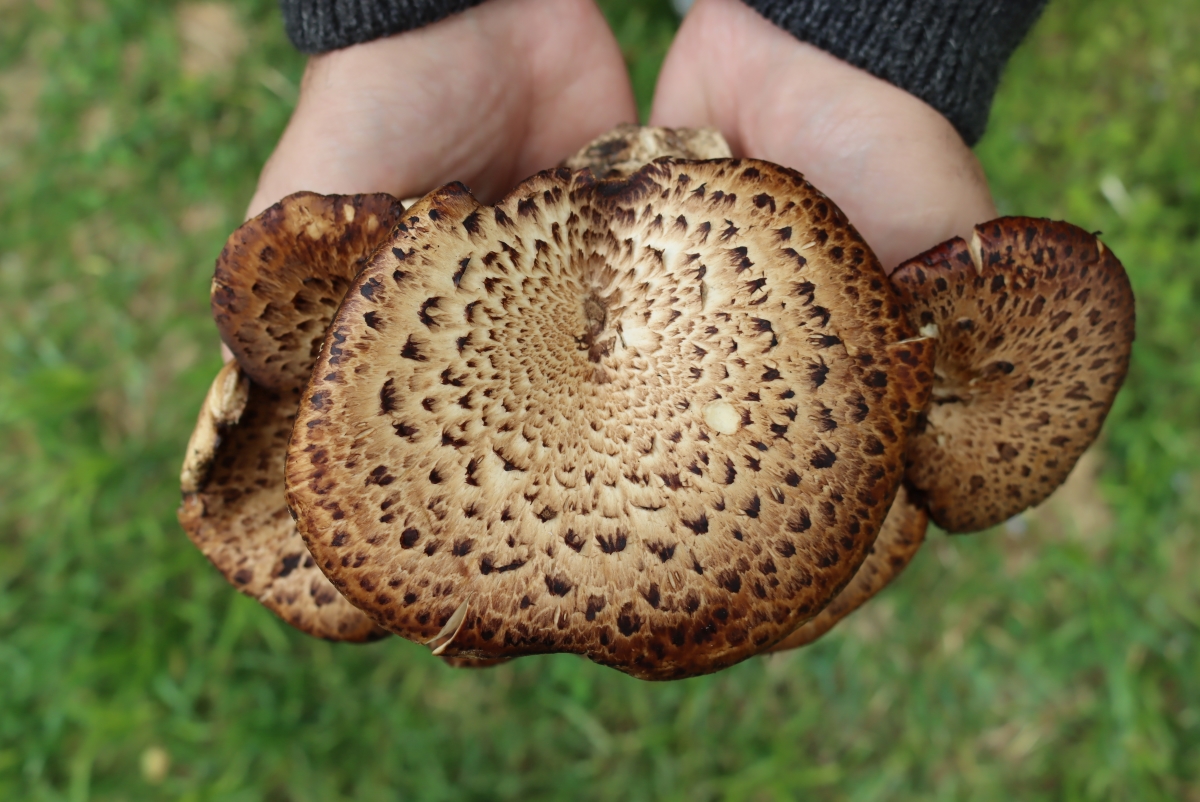
Pheasant back mushrooms are large speckled brown mushrooms, with a pattern on the surface that appropriately enough resembles the pattern on a pheasant’s back. The speckles are actually very thin brown scales, and you can gently separate them from the cap if you’re careful.
They’re easy to identify and a perfect wild mushroom for beginners since they don’t have any look-alikes.
Sometimes they’ll go by the name hawks wing mushroom, which again, is because of their feather-like patterning and large size.
They also go by the name of “dryad’s saddle” because they sprout out of trees in a large saddle-shaped shelf, perfect for a wandering dryad (wood nymph) to ride. The mushrooms get big fast, which makes them easy to spot as the saddles protrude conspicuously in the woods.
The trick is, that the best tasting pheasant back mushrooms are the small, delicate ones. Once they’re gigantic like a saddle, they’re tough and unpleasant to eat. At that stage, they make wonderful mushroom broth, but if you want to eat the actual mushrooms you need to find tiny ones.
As luck would have it, there are often several tiny, immature pheasant back mushrooms growing under mature saddle-sized ones, so just flip them over and maybe you’ll get lucky. Ideally, they’re no more than 2 to 3 inches across when harvested.
Larger specimens have a leathery texture, but you can still use them in mushroom powder or soup stock. You can also cut away about an inch of flesh from their leading edge, and that part will still be tender.
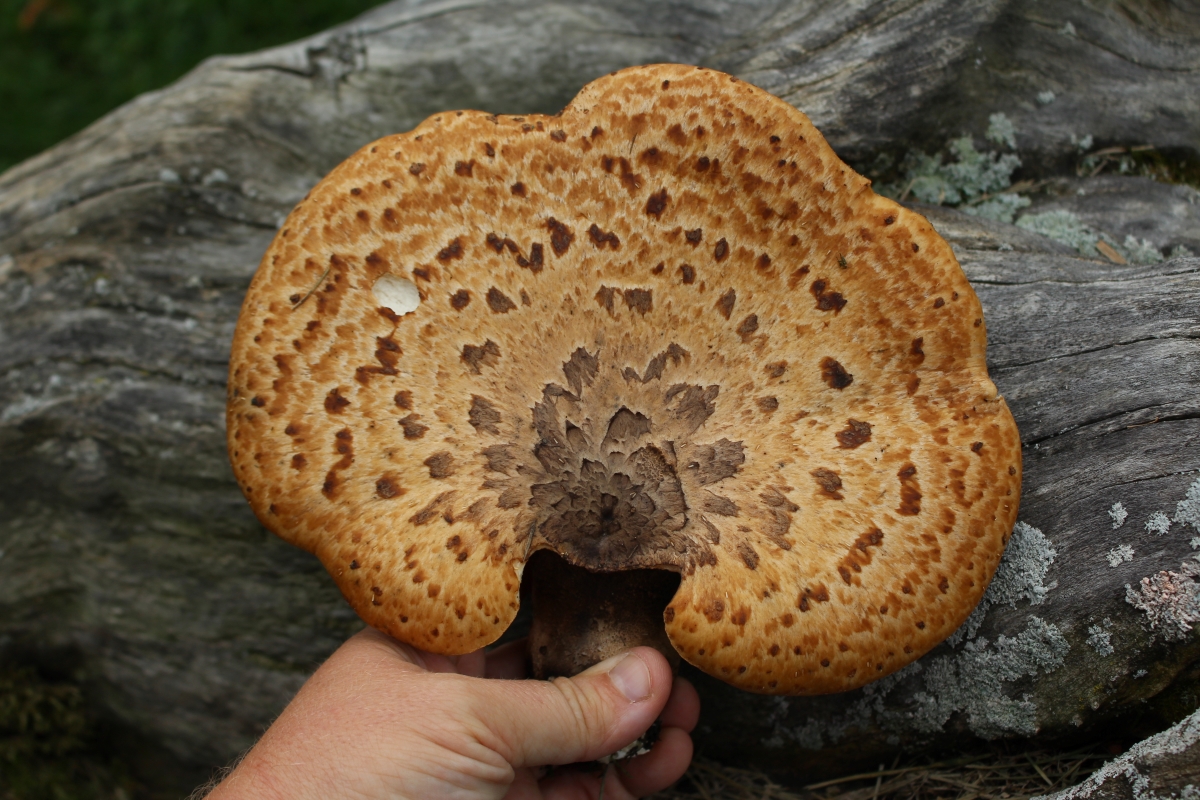
Where to find Pheasant Back Mushrooms
Pheasant back mushrooms, like chicken of the woods mushrooms, are prolific decomposers and they’ll sprout in the same spot year after year. Once you’ve found a log that produces pheasant backs, you’ll be able to come every year.
Generally, they produce in the spring months, a few weeks after morels. Here in Vermont, that’s usually the first week of June, but in more reasonable climates it’s late April and May.
We also often get a flush in the Autumn months, so I check my spots twice a year. Often enough I’ll see them sometime in September too. In warm locations, they’ll sometimes fruit as a winter mushroom too.
Look for them on dead and dying trees, particularly elm but often other hardwood species as well, including oak, ash, and maple. They will grow on living trees as a parasite, breaking down the heartwood and eventually killing the tree. More often though, I find them on dead and downed trees as a decomposer.
Stately elms were once a common park and roadside tree, but they’ve been killed off by a number of diseases in the past few decades.
I have a particular elm that I watch each spring. It’s downed by the side of a backcountry dirt road that I often travel, and I can “drive-by forage” with my eyes to see when the pheasant back’s are ready.
When this log in bright sunlight fruits and is large enough to see driving by, it’s too far gone to harvest. That’s not the point. Right by a dusty dirt road isn’t the best place to forage anyway…but it does tell me when to check my woodland spots.
This log heats up quicker in the spring than other locations, and when the pheasant backs are big on it, they’re just about the right size in shady woodland spots (or at the edges of cool parkland spaces).
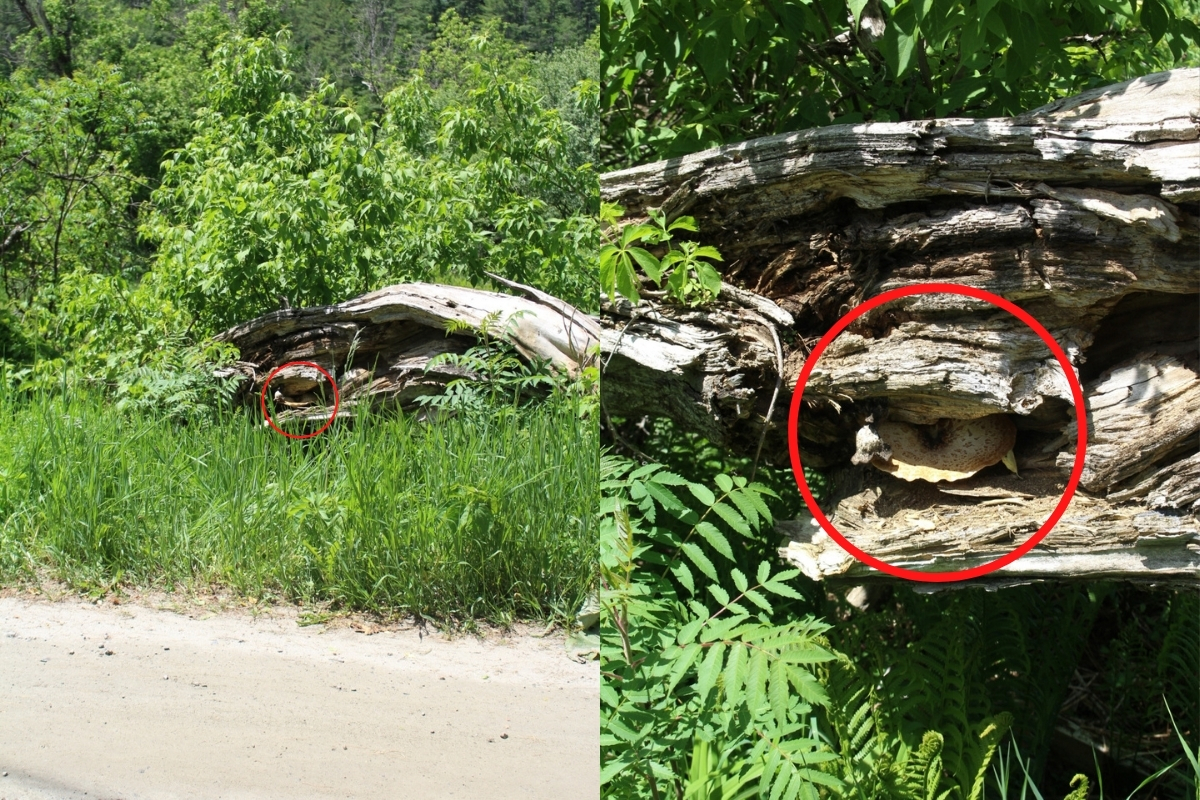
Identifying Pheasant Back Mushrooms
Once you think you’ve found a dryad’s saddle, identification is pretty simple.
First, you want to look for the distinctive pheasant pattern on the top. That’s probably what drew you to the mushroom in the first place.
Make sure it has a single attachment point to the log, usually a thick round single stem where it sprouts from the wood. Unlike chicken of the woods which grows as a fringe, pheasant backs come out with a stem.
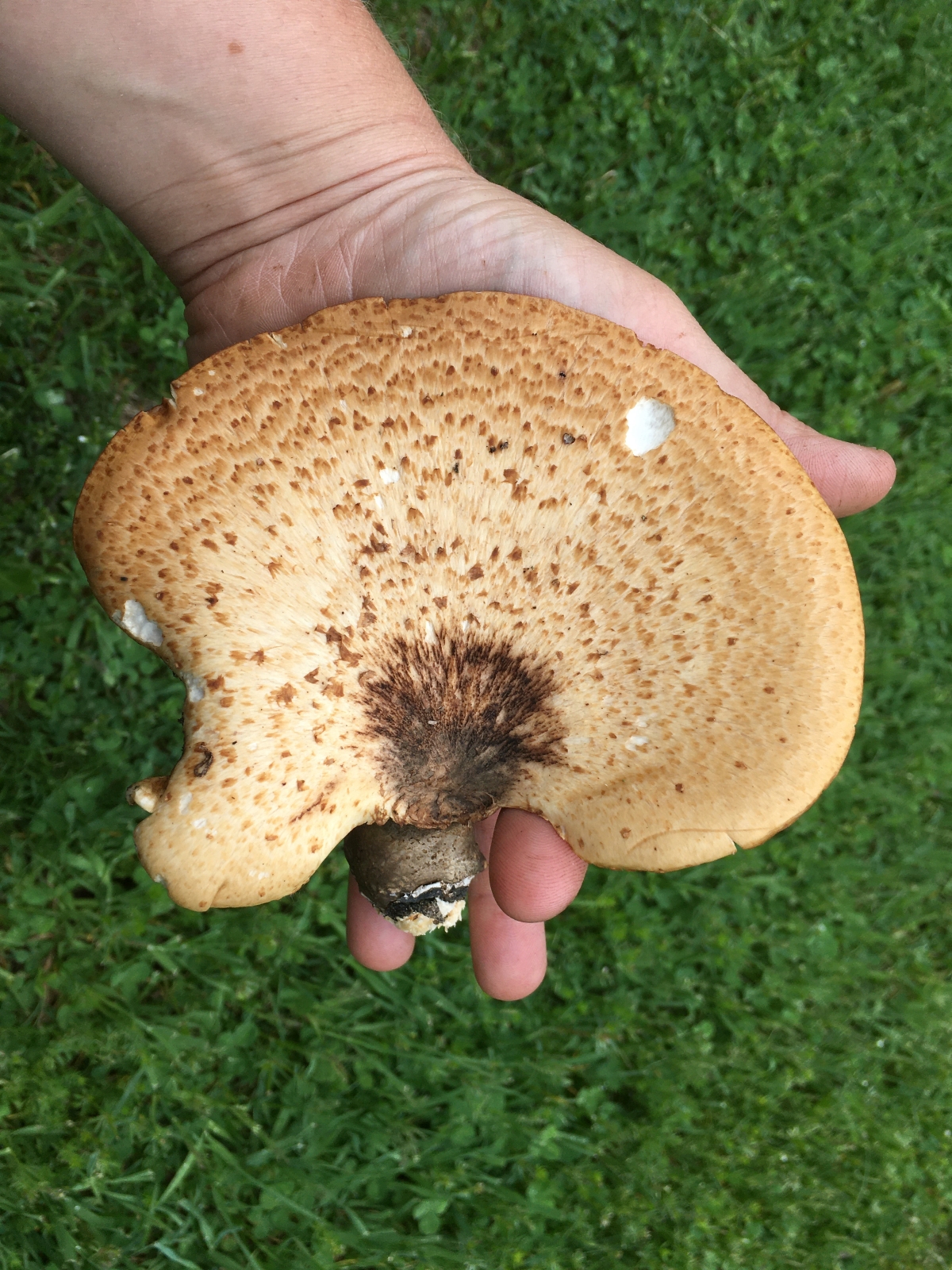
Flip the mushroom over, and you’ll notice honeycomb-shaped pores. When the mushrooms are older, the pores are quite deep and really distinct.
That’s when it’s easiest to see their shape, which isn’t quite exactly like the regimented honeycomb in a beehive. It’s a bit more free form, and the honeycomb shapes are a bit irregular.
Still, it kind of reminds you of honeycomb.
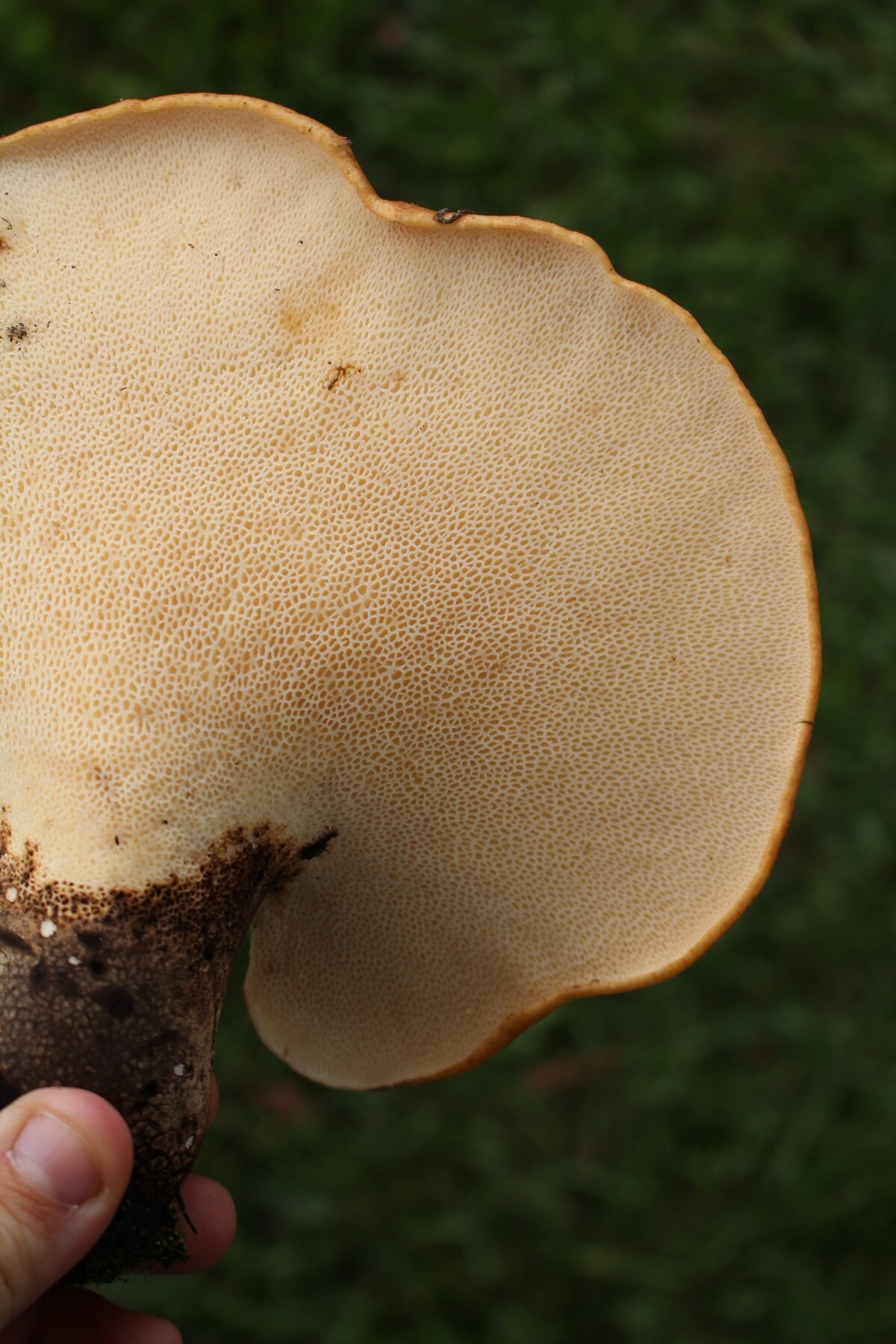
On younger pheasant backs, it’s a bit harder to see.
The pore surface is just starting to develop, and the honeycomb is quite small and not very deep. It almost looks like irregular pinpricks, but if you look closely the holes aren’t round.
They won’t be very deep at this point, less than 1mm. Later they’ll be up to 2- 3 mm deep as the mushroom grows.
The spore print from dryad’s saddle is white, though it’s usually not necessary for identification since it doesn’t really have any close look-alikes.
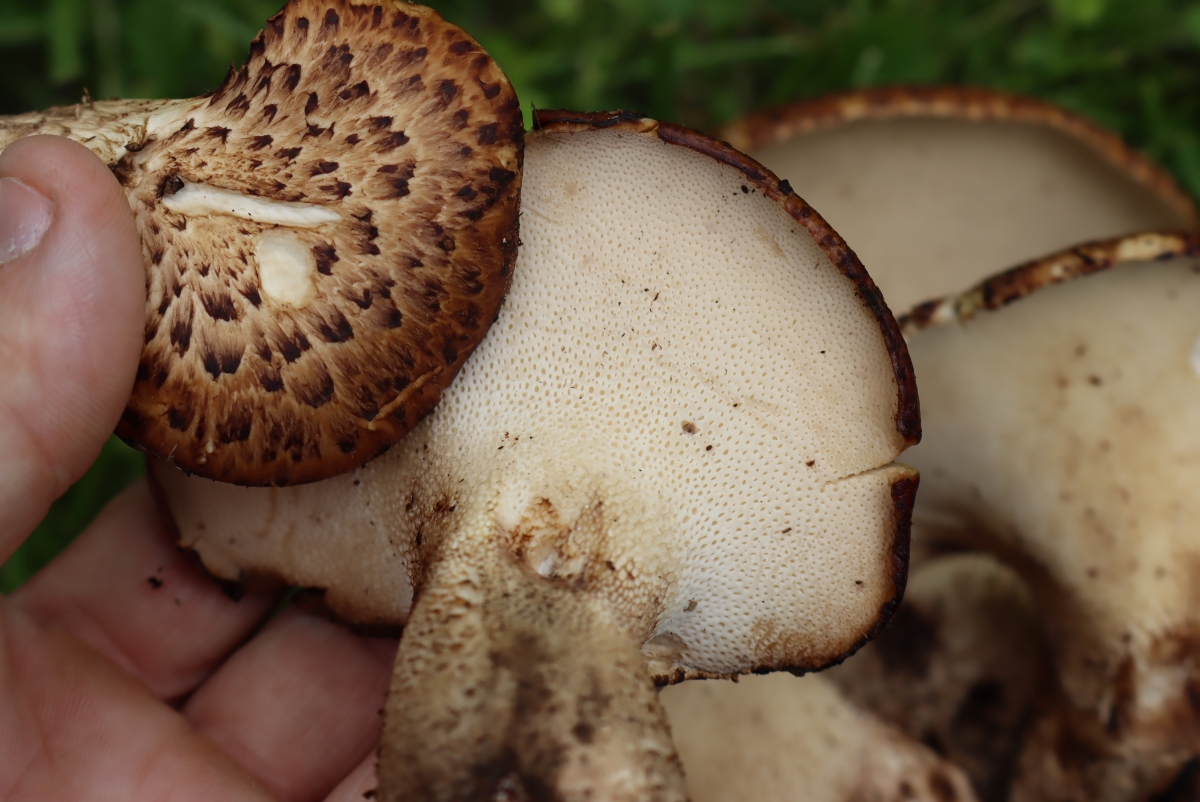
If you’ve got a dappled, pheasant-colored cap with a honeycomb surface underneath, you’ve got a pheasant back. Simple as that.
Beyond that, the smell is a dead giveaway.
While most mushrooms smell like, well, mushrooms, these have a bright, almost citrus-y cucumber scent. Some people compare its scent to freshly cut watermelon rind. Not the fruit, just the fresh aromatic green smell of the rind.
I know, hard to believe, and often the smell isn’t all that strong in older specimens or intact mushrooms that haven’t been cut. Cut one though, and you’ll smell the cucumber.
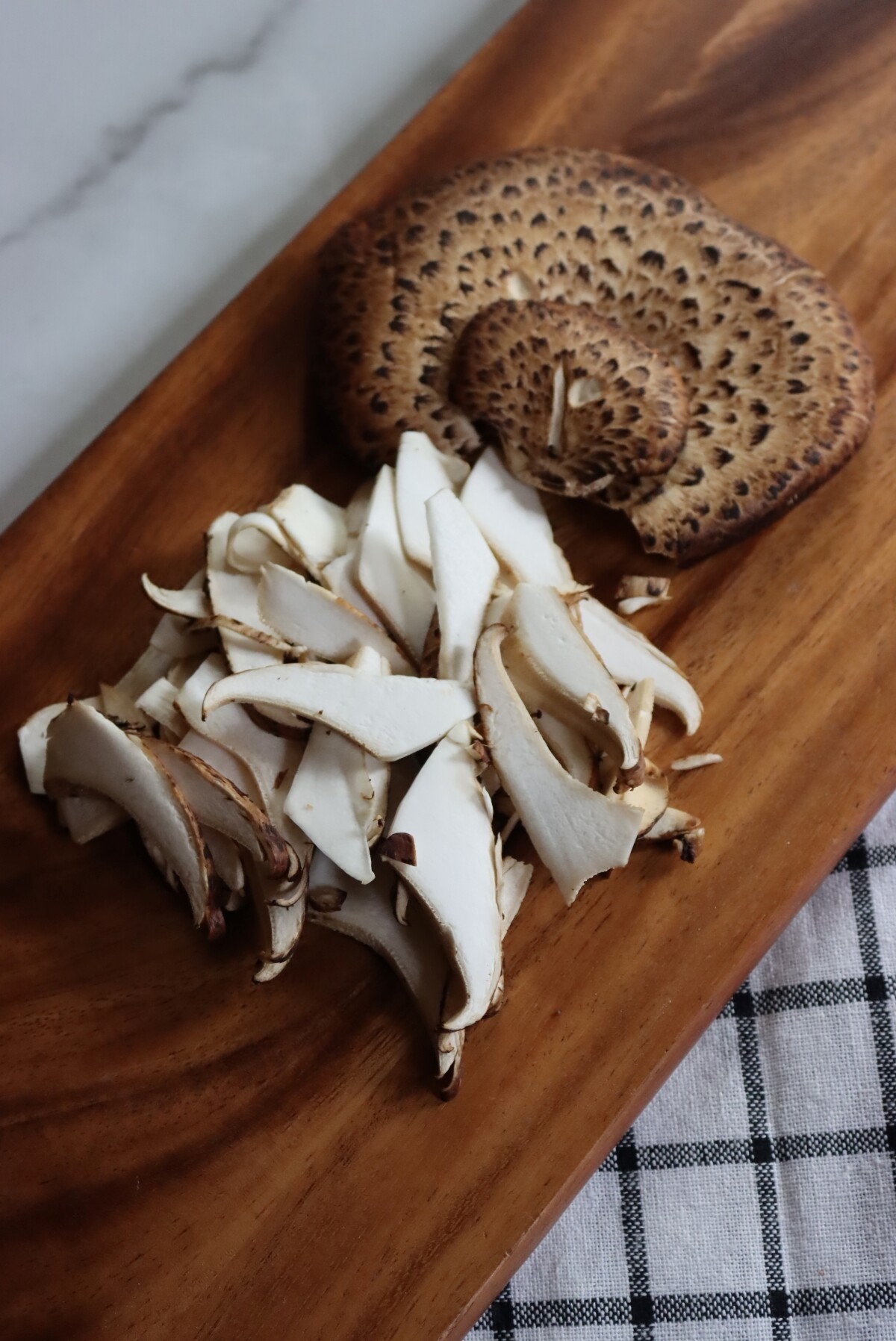
Harvesting Pheasant Back Mushrooms
Harvesting is pretty simple, just reach in and gently break the mushroom off of the deadwood. It should come away easily, as my 4-year-old demonstrates below.
You shouldn’t need a knife or any other harvesting tools, but you can use one if that’s your preference. The stalk usually isn’t consumed, it’s only used in stocks because it’s quite tough, even in young pheasant backs.
Feel free to cut it off in the field, or bring it home as I do for other uses.
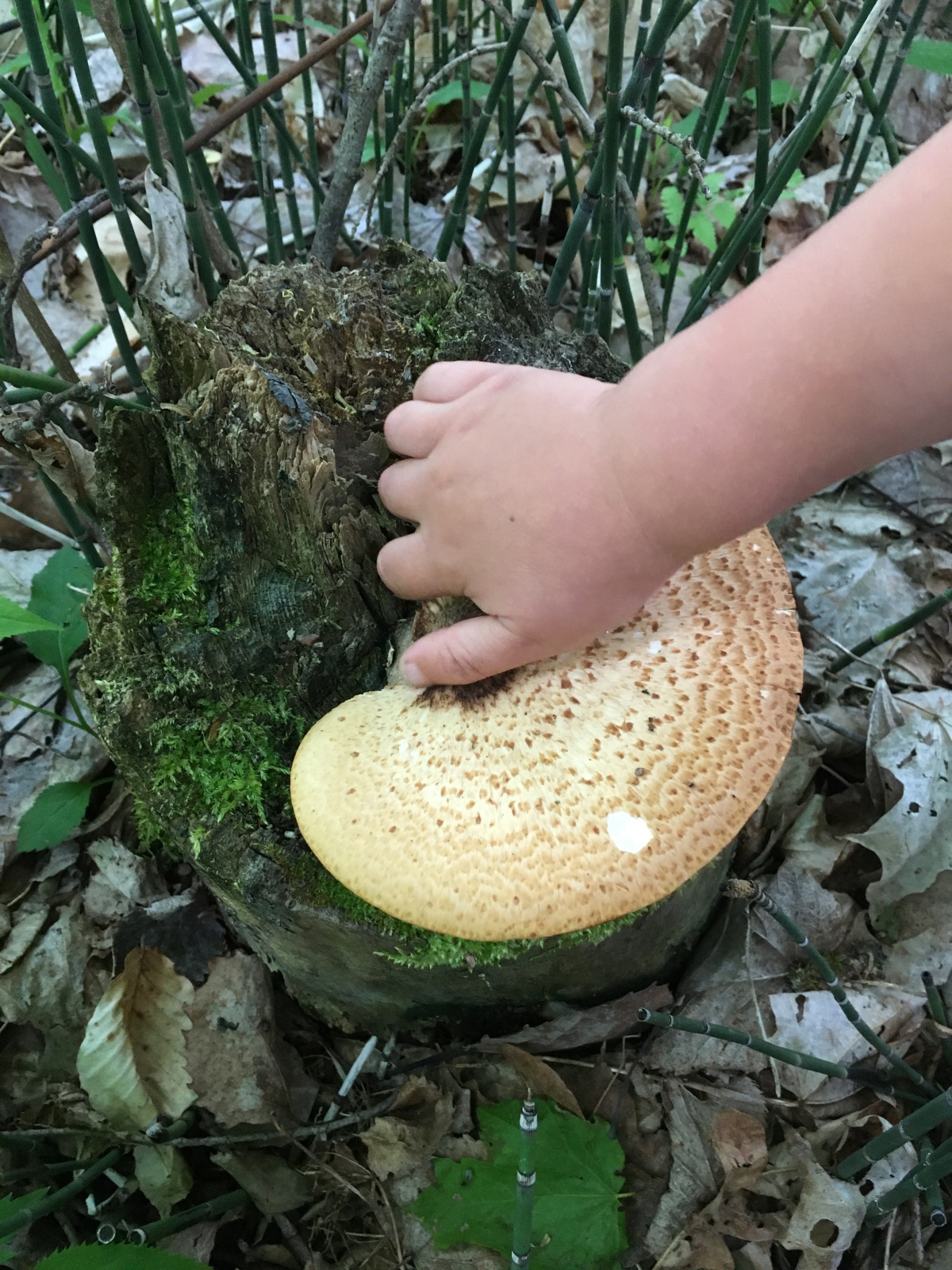
How to Cook Pheasant Back Mushrooms
Young pheasant backs can be dusted clean, sliced, and sauteed in butter or oil. They have a distinctive, almost acidic flavor that to me tastes like they’ve been splashed with vinegar already.
Add in their cucumber-like smell, and I think they do particularly well in pasta dishes. They’re also good in cold (but cooked) salads, like couscous salad or pasta salad. They add a brightness to the mix, but also the savory umami of any mushroom.
Personally, I think they’re great with minimal preparation. Some people, however, think the pore surface has an awkward texture once cooked. It can be peeled off if you prefer, and once you get started it’ll peel away like an orange peel (or the peel of a puffball mushroom).
You can also use a sharp knife to strip away the pore surface. (Or just leave it on, as I do.)
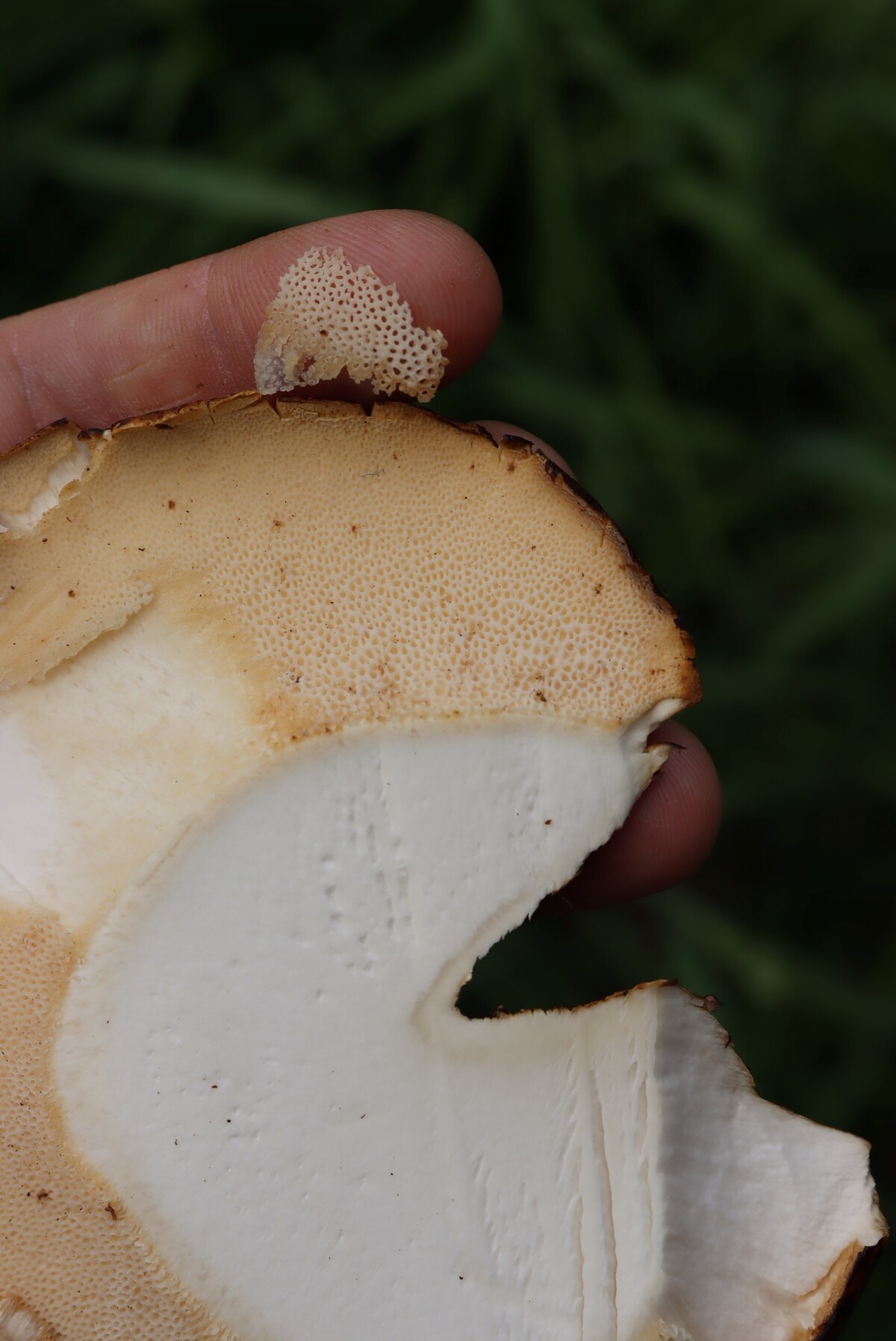
Some people actually like to just peel pheasant backs altogether, removing both the dappled pheasant cap surface and the pore surface.
That’s actually pretty easy to do, provided you cut the mushroom first.
Simply slice them, and then you can peel away the top surface and the poor surface, as they are distinct layers. (Again, I don’t do this, I eat them whole as is, sliced and cooked. This is a matter of personal preference, and some just don’t like the texture of the surface layers.)
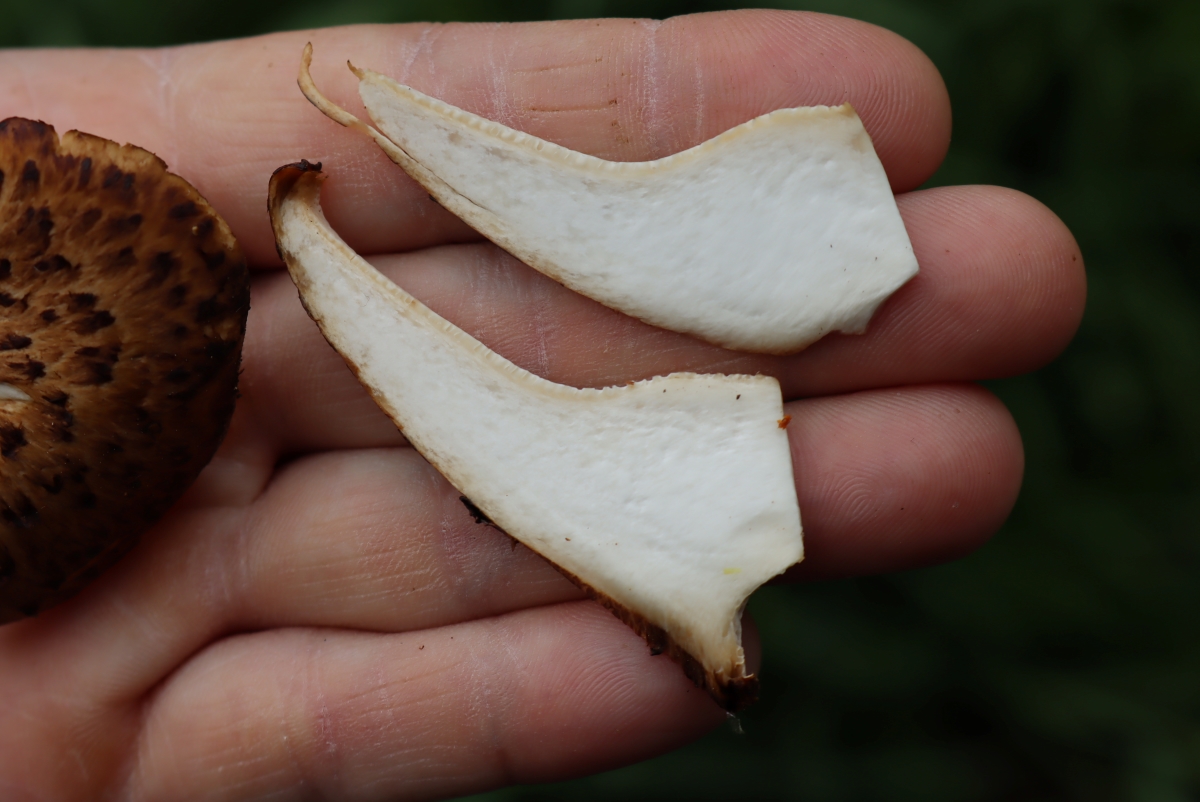
Once sliced and sauteed, you can use pheasant back mushrooms anywhere you’d use sauteed mushrooms. Since I think they taste a bit acidic, as if they’ve already been lightly tossed in vinegar, I think they do especially well with cooked greens.
Last season I paired them with wild asparagus, hosta greens, dandelion greens, and some edible flowers from my yard. It made for a truly spectacular wild foraged lunch with little more than butter and wild vegetables/mushrooms.
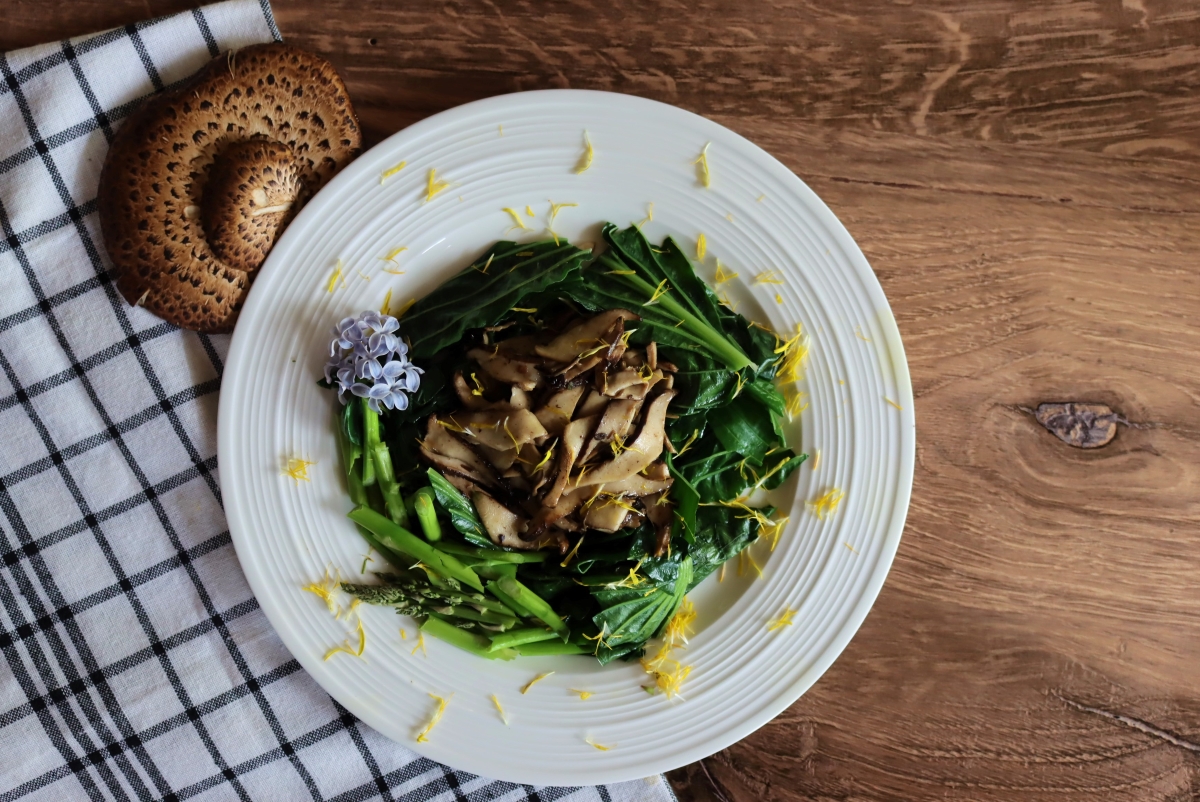
Larger pheasant back mushrooms tend to be tough, and don’t taste nearly as good as smaller ones.
If you only find big ones, the best way to use them is in a mushroom stock. Simply simmer them in a bit of water until you’ve extracted their color and flavor, then strain and cook with the broth as you otherwise would use broth.
More the recipe following sort? Here’s a recipe for pheasant back stock.
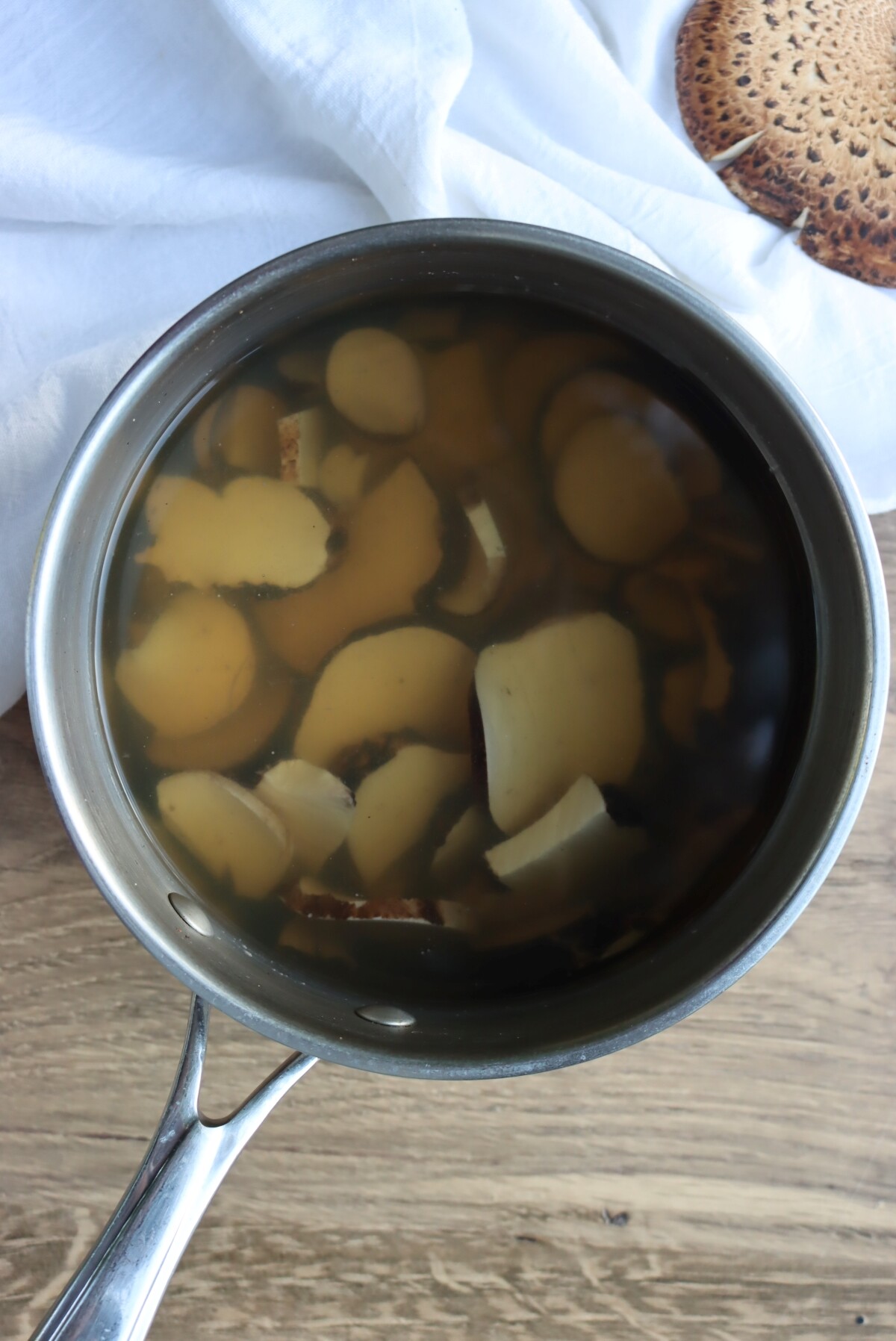
Pheasant Back Mushroom Recipes
Beyond a simple sautee, or mushroom broth with the larger ones, I’ve also found a number of recipes using dryad’s saddle if you’re feeling adventurous:
- Pheasant Back Mushroom Burgers
- Tempura Fried Pheasant Back Mushrooms
- Stinging Nettle and Pheasant Back Palak Paneer
- Dryad’s Saddle Pickled Mushrooms with Jalapeno and Dill
At this point, I don’t know of anywhere that sells pheasant back mushrooms commercially. You might get lucky and find them at your local farmer’s market, as I sometimes do. They’re often just coming in at the tail end of Morel season here locally.
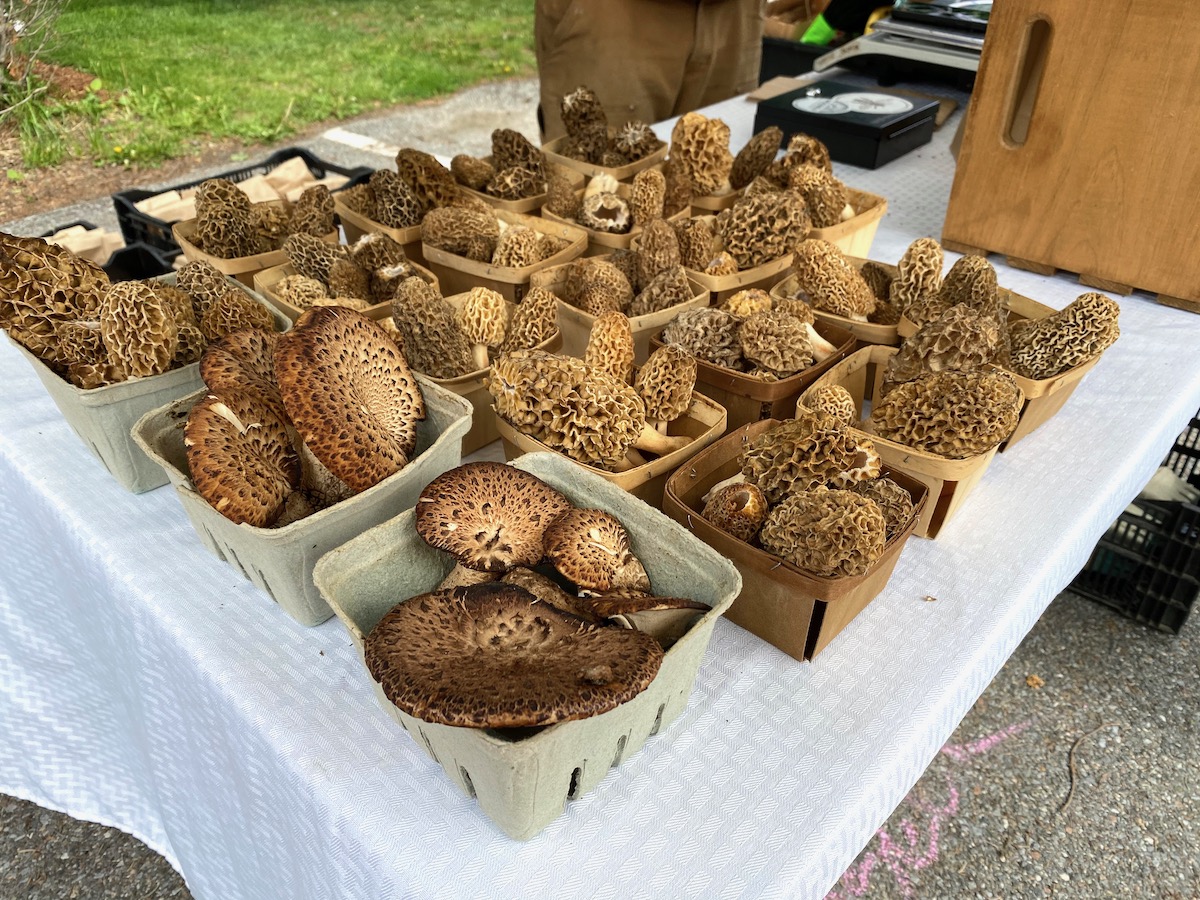
Mushroom Foraging Guides
Looking for more mushroom foraging guides?
- Morel Mushrooms
- Puffball Mushrooms
- Chanterelle Mushrooms
- Shaggy Mane Mushrooms
- Lion’s Mane Mushrooms
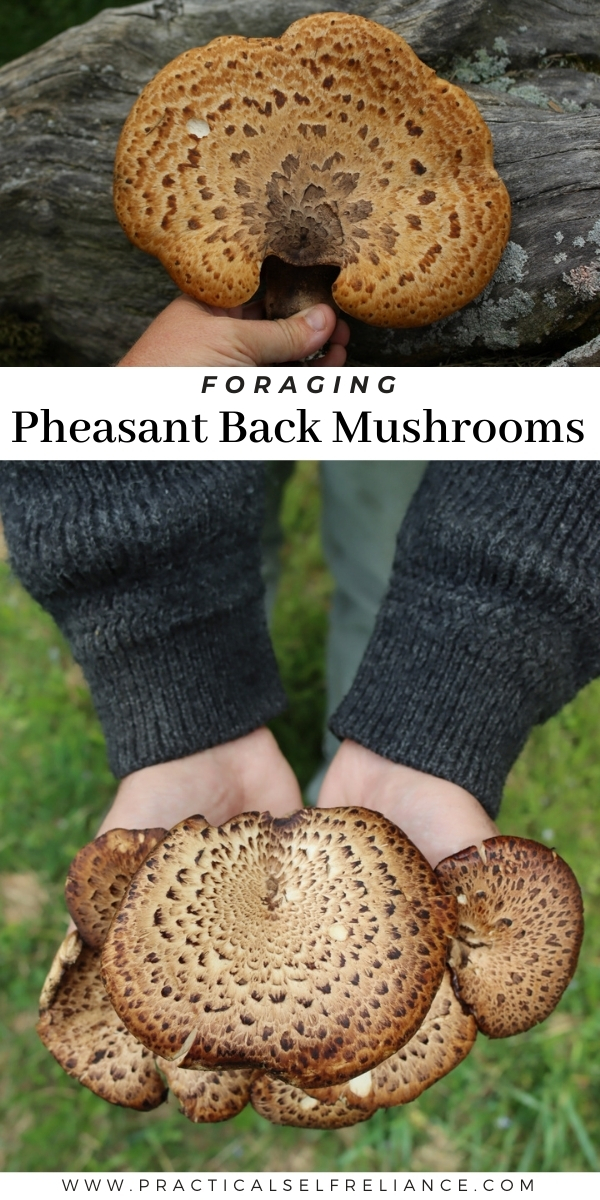

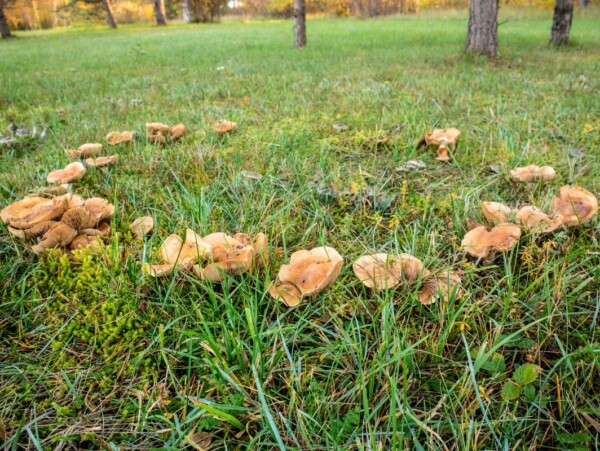
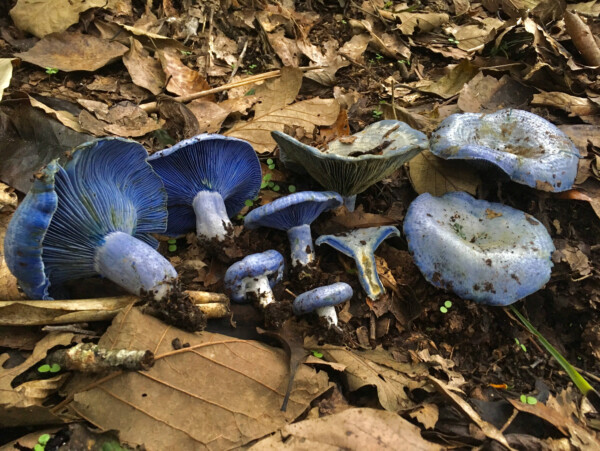
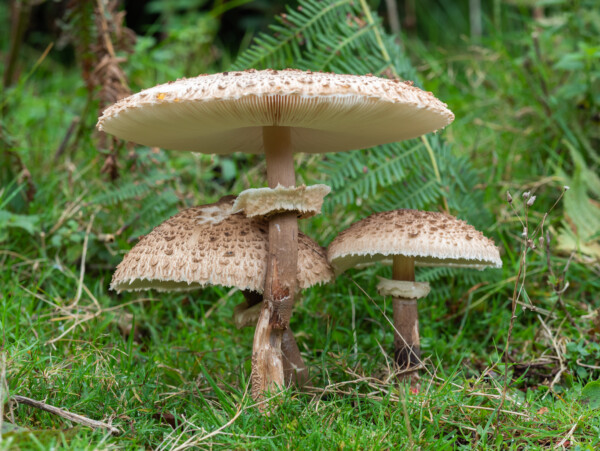
Your website is amazing! Thank you for sharing your knowledge! I am very grateful to you for the extensive information you share, the well researched facts and the wonderful personal anecdotes.
You’re very welcome. Thank you for your encouraging words. We’re so glad you’re enjoying the content.